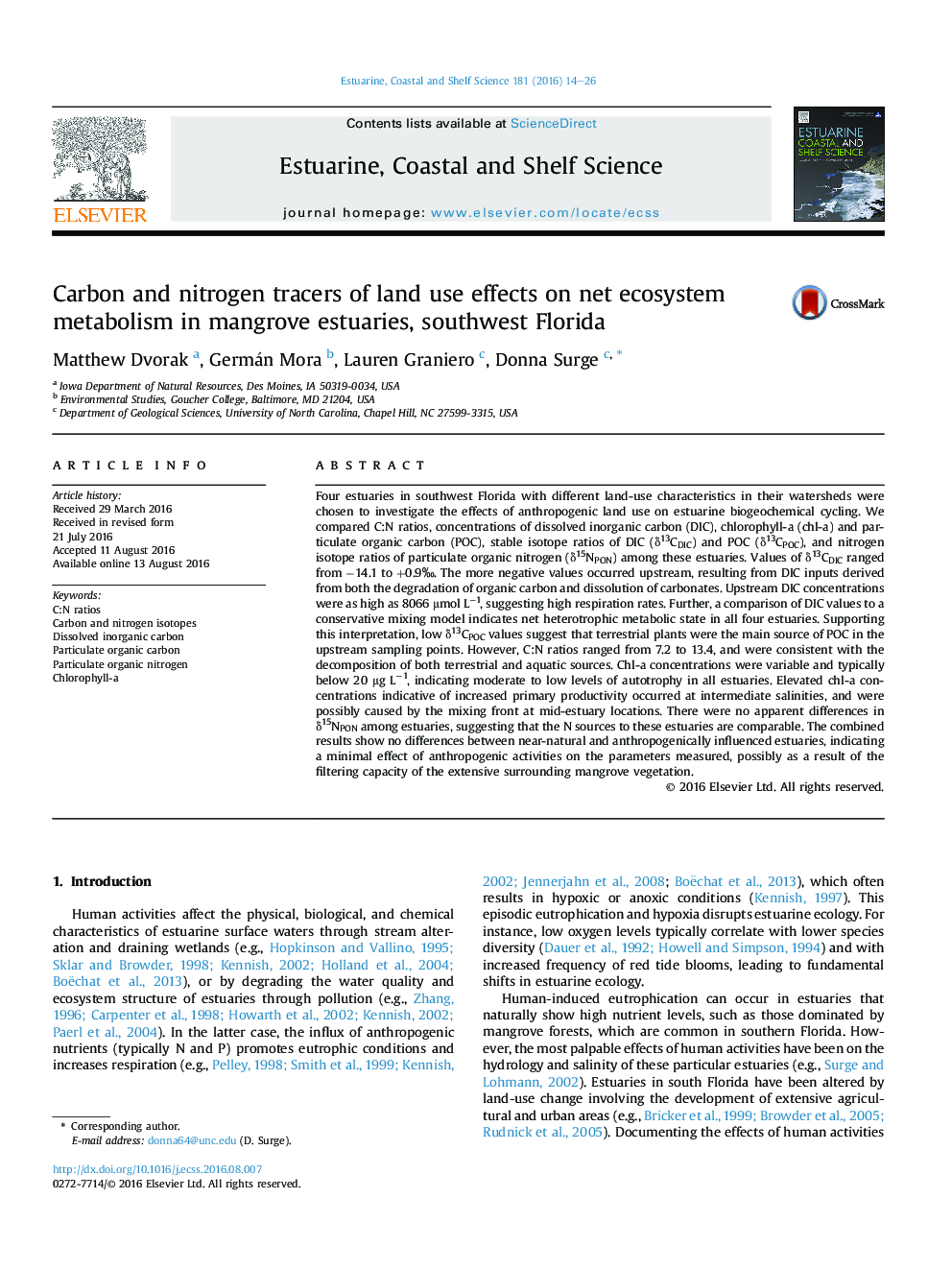| Article ID | Journal | Published Year | Pages | File Type |
|---|---|---|---|---|
| 4539122 | Estuarine, Coastal and Shelf Science | 2016 | 13 Pages |
•Land use effects on estuarine biogeochemical cycling were investigated.•Proxies show no differences between near-natural and human-impacted estuaries.•Filtering capacity of mangroves may reduce effects of anthropogenic land use.
Four estuaries in southwest Florida with different land-use characteristics in their watersheds were chosen to investigate the effects of anthropogenic land use on estuarine biogeochemical cycling. We compared C:N ratios, concentrations of dissolved inorganic carbon (DIC), chlorophyll-a (chl-a) and particulate organic carbon (POC), stable isotope ratios of DIC (δ13CDIC) and POC (δ13CPOC), and nitrogen isotope ratios of particulate organic nitrogen (δ15NPON) among these estuaries. Values of δ13CDIC ranged from −14.1 to +0.9‰. The more negative values occurred upstream, resulting from DIC inputs derived from both the degradation of organic carbon and dissolution of carbonates. Upstream DIC concentrations were as high as 8066 μmol L−1, suggesting high respiration rates. Further, a comparison of DIC values to a conservative mixing model indicates net heterotrophic metabolic state in all four estuaries. Supporting this interpretation, low δ13CPOC values suggest that terrestrial plants were the main source of POC in the upstream sampling points. However, C:N ratios ranged from 7.2 to 13.4, and were consistent with the decomposition of both terrestrial and aquatic sources. Chl-a concentrations were variable and typically below 20 μg L−1, indicating moderate to low levels of autotrophy in all estuaries. Elevated chl-a concentrations indicative of increased primary productivity occurred at intermediate salinities, and were possibly caused by the mixing front at mid-estuary locations. There were no apparent differences in δ15NPON among estuaries, suggesting that the N sources to these estuaries are comparable. The combined results show no differences between near-natural and anthropogenically influenced estuaries, indicating a minimal effect of anthropogenic activities on the parameters measured, possibly as a result of the filtering capacity of the extensive surrounding mangrove vegetation.
